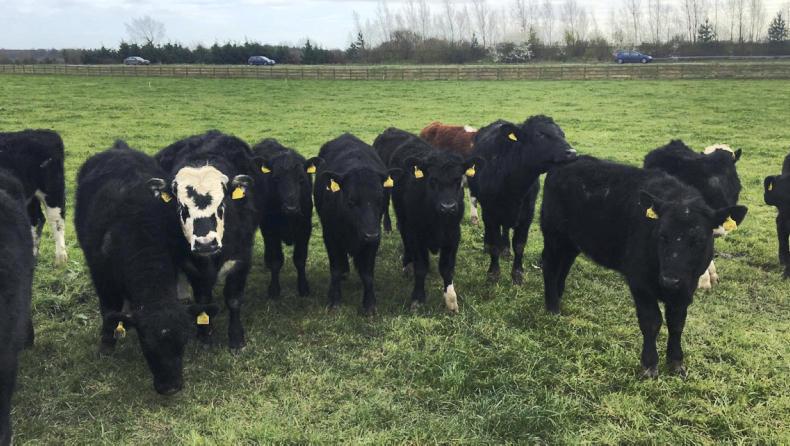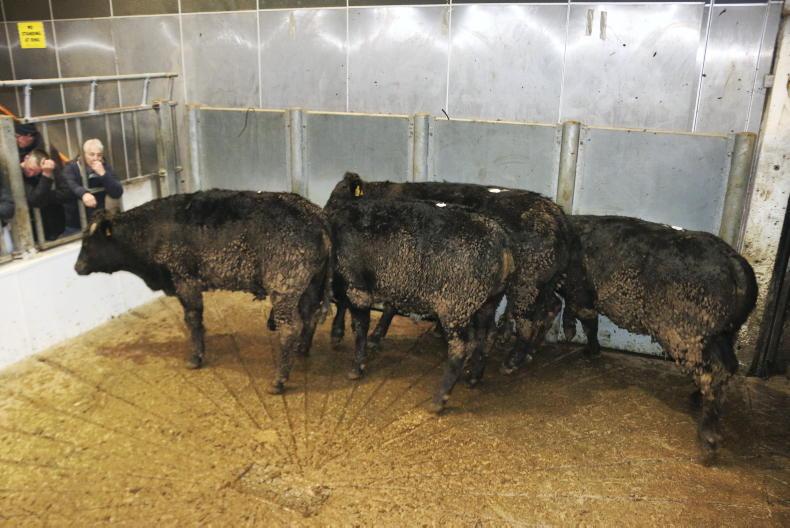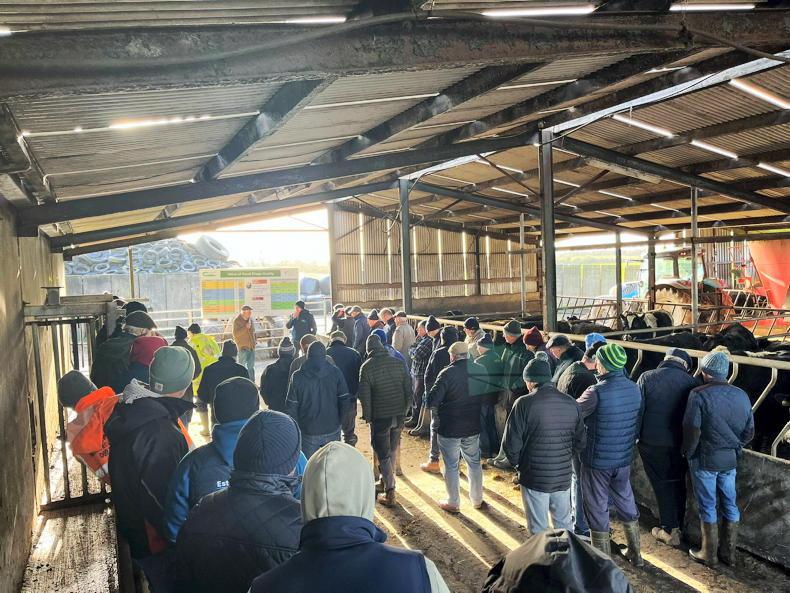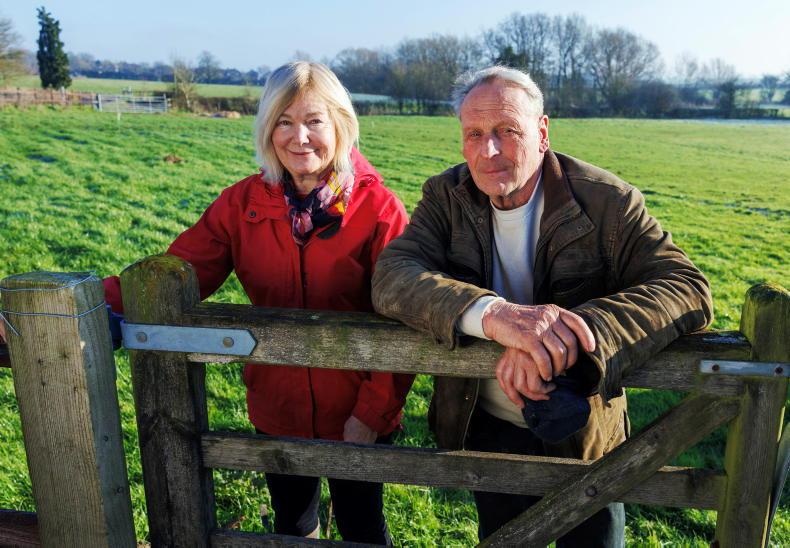Teagasc has been working closely with Conor McGrath for a number of years now with his 23ac parcel.
Prior to 2017, this parcel was grazed in one block in a set stocking system and in 2017 it was split into nine paddocks.
Mark Coyne from Teagasc said: “We set up the paddocks to keep them as square as possible. Some of the paddocks were long and narrow and had to be changed to minimise poaching when stock were travelling to water.”
System
Conor operates a weanling-to-store dairy beef system and in 2016 he grazed 30 animals on the 23ac. With subdivision in 2017, this increased to 50 animals with 123 units N/acre spread. He was also able to take 80 bales of silage as surplus that year.
In 2018, turnout was delayed until March but by 20 May there were 66 cattle out, weighing between 280-300kg. Twenty bales were taken out in June 2018.
Drought
Drought conditions hit the farm hard. Cattle numbers dropped to 45 animals on the block and 20 bales of silage were fed.
Conor started to close off paddocks on 15 October with the last paddock closed on 23 November. A total of 160 units N/acre was spread in 2018, 57 units/acre higher than 2017.

Conor McGrath's system outline.
This year, 21 cattle were turned out on 19 February in ideal conditions. There has been 23 units/acre of urea spread so far.
Diesel in tank
Grass 10 specialist Fergus Bogue commented: “Early nitrogen is like diesel at the bottom of your tank. It just takes a little bit to get going, but you won’t go anywhere without it.”
The farm is currently stocked at 560kg/ha with a target of getting to 2,600kg/ha by 20 May.

Teagasc Grass 10 specialist Fergus Bogue and local Teagasc adviser Mark Coyne explain the concept of early turnout to those attending.
Teagasc adviser Mark Coyne said that the biggest advantages from early N and early turnout were increased weight gain and reduced cost, slurry and labour.
“The target here is to graze 3ac/ week and keep turning out cattle until the targets are hit,” he said.
The Teagasc five-point plan for turnout this spring:
1 The grass: Low grass cover.2 The paddock: Dry, square and avoid soft paddocks.3 The infrastructure: Block/strip-grazing and water.4 The animal: Lighter animals first.5 The farmer: Flexible attitude and sharp.
Teagasc has been working closely with Conor McGrath for a number of years now with his 23ac parcel.
Prior to 2017, this parcel was grazed in one block in a set stocking system and in 2017 it was split into nine paddocks.
Mark Coyne from Teagasc said: “We set up the paddocks to keep them as square as possible. Some of the paddocks were long and narrow and had to be changed to minimise poaching when stock were travelling to water.”
System
Conor operates a weanling-to-store dairy beef system and in 2016 he grazed 30 animals on the 23ac. With subdivision in 2017, this increased to 50 animals with 123 units N/acre spread. He was also able to take 80 bales of silage as surplus that year.
In 2018, turnout was delayed until March but by 20 May there were 66 cattle out, weighing between 280-300kg. Twenty bales were taken out in June 2018.
Drought
Drought conditions hit the farm hard. Cattle numbers dropped to 45 animals on the block and 20 bales of silage were fed.
Conor started to close off paddocks on 15 October with the last paddock closed on 23 November. A total of 160 units N/acre was spread in 2018, 57 units/acre higher than 2017.

Conor McGrath's system outline.
This year, 21 cattle were turned out on 19 February in ideal conditions. There has been 23 units/acre of urea spread so far.
Diesel in tank
Grass 10 specialist Fergus Bogue commented: “Early nitrogen is like diesel at the bottom of your tank. It just takes a little bit to get going, but you won’t go anywhere without it.”
The farm is currently stocked at 560kg/ha with a target of getting to 2,600kg/ha by 20 May.

Teagasc Grass 10 specialist Fergus Bogue and local Teagasc adviser Mark Coyne explain the concept of early turnout to those attending.
Teagasc adviser Mark Coyne said that the biggest advantages from early N and early turnout were increased weight gain and reduced cost, slurry and labour.
“The target here is to graze 3ac/ week and keep turning out cattle until the targets are hit,” he said.
The Teagasc five-point plan for turnout this spring:
1 The grass: Low grass cover.2 The paddock: Dry, square and avoid soft paddocks.3 The infrastructure: Block/strip-grazing and water.4 The animal: Lighter animals first.5 The farmer: Flexible attitude and sharp. 











SHARING OPTIONS